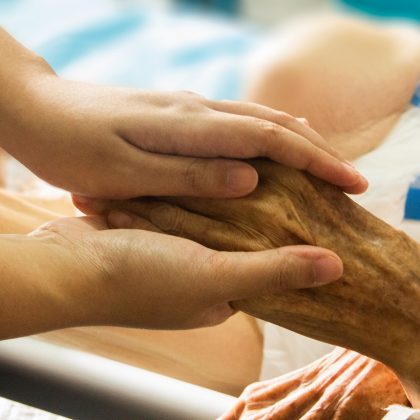Making the Invisible Visible: Inviting Persons with Disabilities into the Life of the Church
Dutch theologian Hans Reinders believes that being chosen as a friend is the greatest good we can do for other people, and for the common good: “The ultimate good is. . . what is desirable for all people because of the human beings they are. Therefore, the human good must be what all people can participate in. Friendship is that kind of good.”[1]
Reinders’ conception of friendship extends to inviting and making accommodations for all kinds of worshipers, worshipers whom we may assume have the human desire to belong. His call for friendship is nothing short of a call to obey the great commandment to love our neighbor as ourselves—and to look for neighbors whom we may have missed, so that we may love them too.
But what does it mean to be a friend to someone who is profoundly disabled? How can we demonstrate solidarity as a set of body practices? In the United States, it is estimated that 1 to 3 percent of the population is in the category of profoundly disabled.[2] Logistically, many of us will never personally know an individual with severe and/or multiply handicapping conditions. So, are we then free from the responsibility of friendship?
Theologian and liturgist Don E. Saliers would say we are not freed, and insists on creating a sense of belonging for all kinds of worshipers, including those with profound disabilities. Wondering how our liturgies and language can be more inclusive, he examines three meanings of liturgy. He returns to the Latin term, leitourgia, and explains that its root meaning has to do with the work of the gathered assembly:
At root, liturgy is that common work in which the community assembles about the book of memory and hope, the font of the water of life, and the table of the word and the meal.[3]
Another definition reflects the ongoing work of Jesus in the world by the community, the whole Body of Christ. So, in the liturgy, we join a company, a long company of people who are quite other than we: Paul, Augustine, Teresa of Avila, Dame Julian of Norwich, Francis of Assisi, and all the martyrs. The liturgy of Jesus brings together the dead and the living, the enemy and the friend, the fractured and the whole . . . and . . . through the broken body in the conflicted world . . . it invites praise, a life of blessing in the midst of the mess.[4]
Saliers writes that when we exclude members, by not offering access, or catechesis, or welcome, then the hopes and fears, the hungers and thirsts, the laughter and laments of the Church are incomplete. For this act of inclusion, or friendship, to occur, it would be necessary to survey parishioners to see what special needs exist. Each congregation can remodel itself, bit by bit, according to need, in order to welcome the new, the now-included parishioners.
Read more in Horizons, the journal of the College Theology Society.






